Month Eight in Málaga—Language, literature, art, and lights
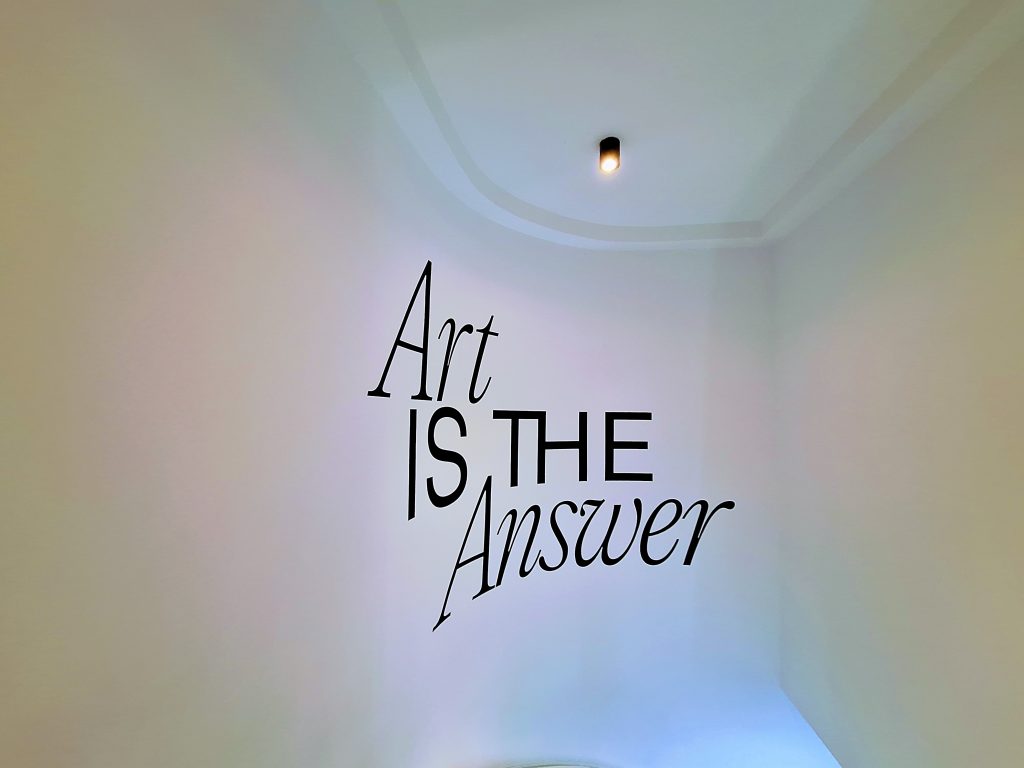
Art seems to have been the theme of this month. Here are a few highlights:
Congreso de Literatura Hispanofiipina
November began with the arrival of two lovely literary people from San Diego, California—Jody Blanco, professor of literature at UCSD and Marivi Soliven Blanco, the author of numerous books including a favorite of mine, the novel The Mango Bride. They were in Málaga for the Congreso Internacional de Literatura HispanoFilipina at which Jody was a presenter. We met for tapas the night they flew in since the conference would occupy their time for the following two days. I was able to attend Jody’s panel on “Voces y Lenguas en el Debate Colonial.” It was fascinating—that is, what I could understand of it. Sometimes the Spanish was beyond my grasp. Jody was impressive in both his delivery and in response to audience questions. For me, it was a good exercise in my Spanish listening comprehension skills as well as an opportunity to learn more about the impact of colonization on Filipino literature.
I also attended the closing activity of the conference which was a gathering at the statue of Jose Rizal for a reading of his poem “Mi Ultimo Adios,” which Rizal wrote before his execution by the Spanish colonial government in the Philippines in 1896. Rizal, a national hero of the Philippines, was a man of remarkable talents and intellect. An ophthalmologist by profession, he was also a painter, sculptor, poet, novelist, and journalist, whose writings inspired the rebellion that eventually led to Philippine independence from Spain.
The reading of the poem took place the day my sisters Rose and Diana and Miscolta family BFF Berlinda arrived in Málaga from San Diego, so I invited them along. Still in our American mode, we arrived promptly at 8 pm. When no one else had arrived after ten minutes, we began to wonder if I’d misread the schedule or if another statue of Rizal existed somewhere else in the city, a very unlikely possibility. Around 8:15 a Spaniard arrived, a university professor who explained what I had known but have yet begun to practice—in Spain no one is expected to arrive at the appointed hour for a social function. By 8:30 we were a small crowd and around 8:40 the reading began. Jose Rizal was illuminated by the light of several cell phones, a local professor/poet read Rizal’s poem, and flowers were laid at the foot of the statue. Despite the rush of cars on the busy Paseo Marítimo and the flow of foot traffic for evening walks along the port, there was a sense of intimacy in that small group assembled to honor Rizal and his enduring words.
Tour of Lorca House in Granada
After Rose, Diana, and Ber enjoyed Málaga’s Centro Histórico, the beach, and the nearby towns of Nerja and Frigiliana, we traveled to Granada where one of the first things we did was visit the summer house and garden once owned by the family of Federico Garcia Lorca. We arrived just after ten in the morning, and I immediately went inside the gift/bookstore (which once housed the hired staff of the Lorca family house) to inquire about the next tour. It seemed that the tour guide had been awaiting the first tourists of the day, which happened to be us. Rosa, the tour guide, promised to speak slowly for us so we could better understand her Spanish.
In the sala downstairs was Lorca’s piano. Before becoming a poet and a visual artist, Lorca was a musician. I asked if anybody was allowed to play that piano these days. “Well, not just anybody,” Rosa replied, and I wondered if she had imagined that I, a nobody with no musical talent, had hoped to bang out some random tuneless notes. Special guests to the house have been invited to play it, including Patti Smith and Bob Dylan. Rosa showed us the kitchen table where Lorca would come downstairs in the middle of the night to write, sometimes falling asleep there. Upstairs we saw the beautiful desk in his bedroom room where he also wrote. Blood Wedding was among the works Lorca worked on in this house.
Lorca was assassinated in the early days of the Spanish Civil War and the location of his remains is unknown. At the end of the war, with Franco’s forces prevailing, Lorca’s family left the country and lived in exile in New York. Rosa said that at the end of his life, Lorca’s father was asked where in Spain he wanted to be buried. He answered, “Nowhere in Spain.” He’s buried outside of New York City. It was Lorca’s youngest sister who upon her return to Spain insisted that the house be preserved as a museum.
No photos were allowed in the house, but here’s one of the exterior and one of my sisters and me on a bench in the garden.
Okuda San Miguel
At the end of their stay in Spain, I accompanied Rose, Diana, and Ber to Madrid. After visiting our uncle and aunt and having tapas with our cousin, we parted ways, them to a hotel near the airport before their flight back to California and me to Museo Gran Via 15, a small, recently opened, art gallery that featured for its first show the work of Okuda San Miguel. It’s also where I encountered the Art is the Answer reminder.
Okuda, whose birth name is Oscar San Miguel Erice, began as a graffiti artist. His studio works led to shows in capitals around the world. His outdoor works can be seen in cities in Canada and the United States. His show at Gran Via 15 is called “Walking Life,” an immersive experience as the visitor is invited to move through the space surrounded by three-dimensional geometric representations of humans and animals in bubble-gum colors.
I visited in the middle of the month on a Sunday evening. There were few other visitors when I roamed the space so I could experience the works with little distraction. I’d seen photos of Okuda’s work and also specifically of the exhibit and I wasn’t sure what I would feel about it in person. But from the moment I stepped into the first room, an anteroom, really, that was a sort of prelude to the rush of colors to come, I was transported to Okuda’s world of whimsy and desire in solidly grounded geometry.
My November Read
Among the books I read or started reading this month was Jhumpa Lahiri’s Roman Stories. All the stories were elegant, but the last story, which I read while alone in a restaurant, hit me hard with its beauty and I blinked vigorously over my soup. I was motivated to read the book because I’m fascinated by the fact that Lahiri wrote the stories in Italian, an acquired language after her move to Rome. I wonder if at some point in my life in Spain and at the further end of my trajectory of learning Spanish, I might feel the urge and the confidence to write stories in Spanish. Okay, probably not. But certainly, in English. All my fiction to this point has been set in a stand-in for National City where I grew up. In the percolation phase are stories I want to write set in Málaga and in other parts of Spain. For now, though, I’m focused on writing a new novel, a fun endeavor, and also trying to get another published, an opposite-of-fun endeavor.
How’s My Spanish Going?
I’m still slapping my forehead in exasperation when I make a mistake, eliciting reassuring cries of tranquila from my teacher, though I consider every Spanish-speaking person I talk to a teacher. Sebastián is my official teacher, and he has recently upped the game by assigning me to watch the popular series Aqui No Hay Quien Viva which ran for five seasons in the early 2000s. The characters all seem to speak at warp speed, which is the point of my watching and listening to the series. If I can accustom my ear to the velocity of their speech, the daily speech I hear in real life in Málaga will be music to my ears, by which I mean, actual discernible words and not a hurricane of sounds.
This is month eight for me in Málaga. By the one-year mark, I want to be able to distinguish on the first pass the individual words and not have to rewind the video, because I can’t rewind someone’s speech in real life.
My young Croat friend who is here for an Erasmus year as a teaching assistant at the University of Málaga is not only fluent in Spanish, he’s also a fanatic about grammar and loves to explain it. I recently made a tea date with him, and we spoke Spanish for an hour and a half, with him enthusiastically but gently correcting me and offering the grammatical explanations that underlie the constructions that keep confounding me. Over the next months, I’m going to be inviting him for tea many times.
The Lights Go On
I wish this heading was a metaphor for some spectacular breakthrough in my Spanish acquisition. But the spectacular brilliance belonged to the official inauguration of the Christmas light and sound show that will last 40 nights here in Málaga. Being there for that first night of dazzle just highlighted the happiness I feel living in this city.

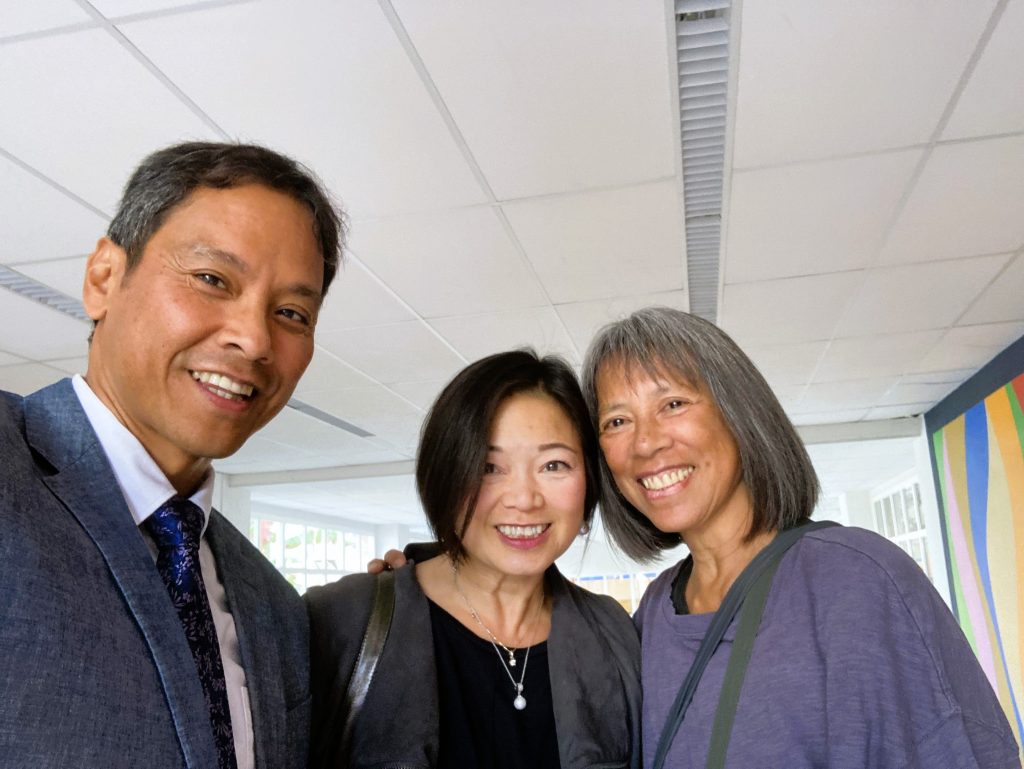
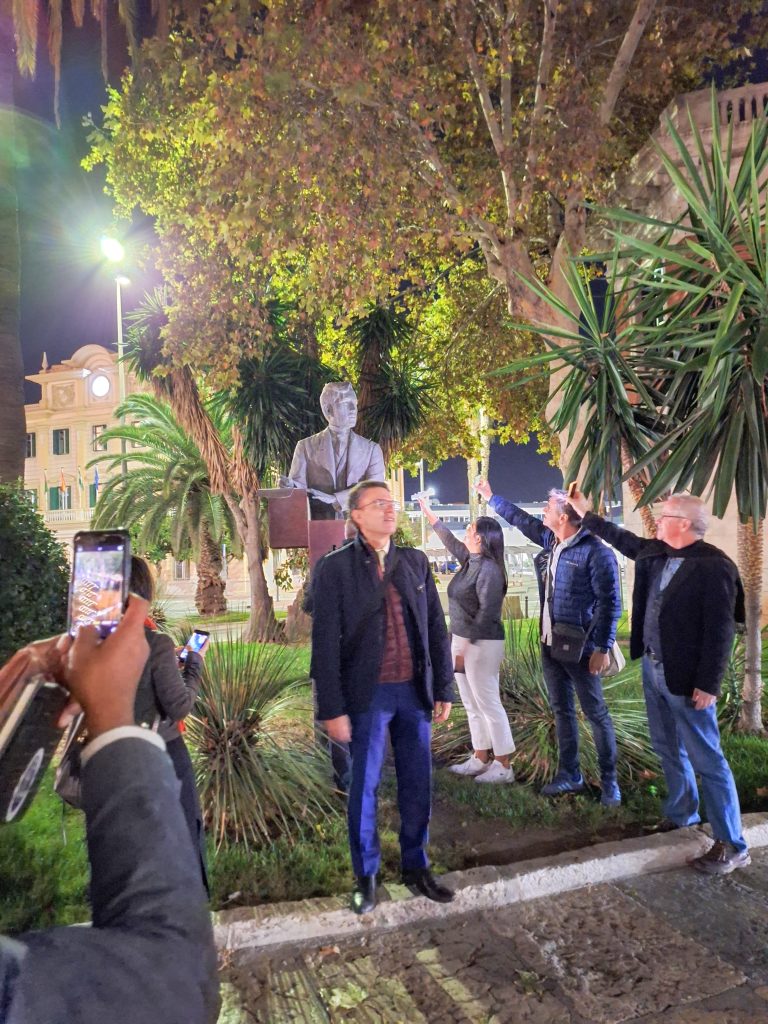

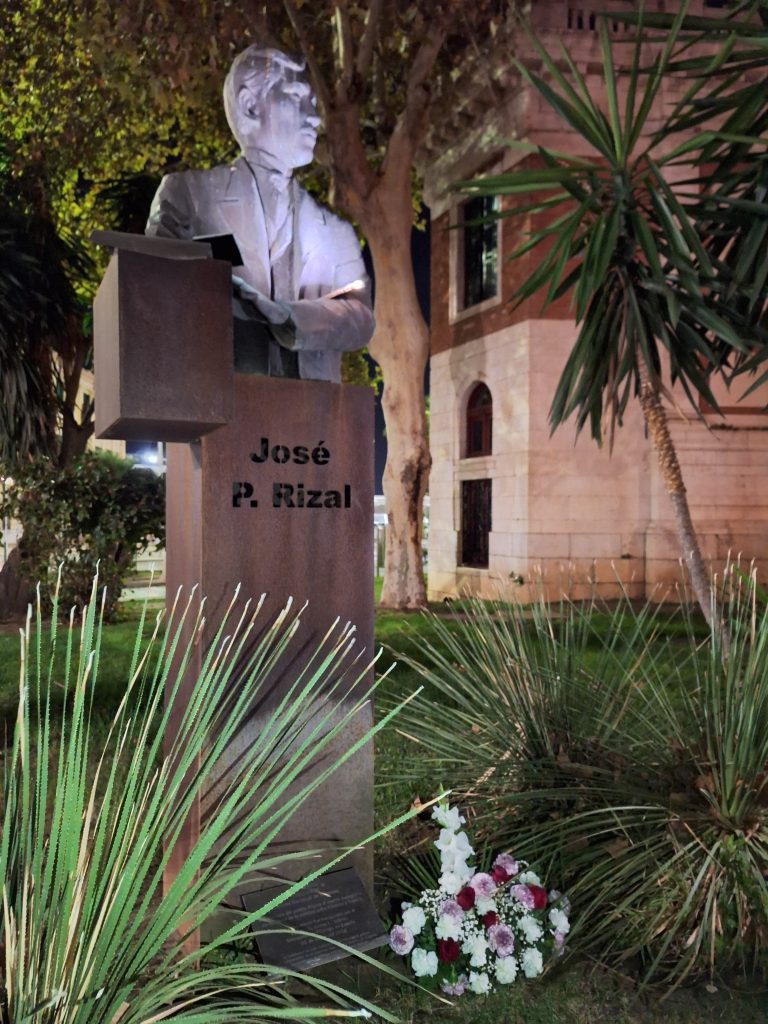
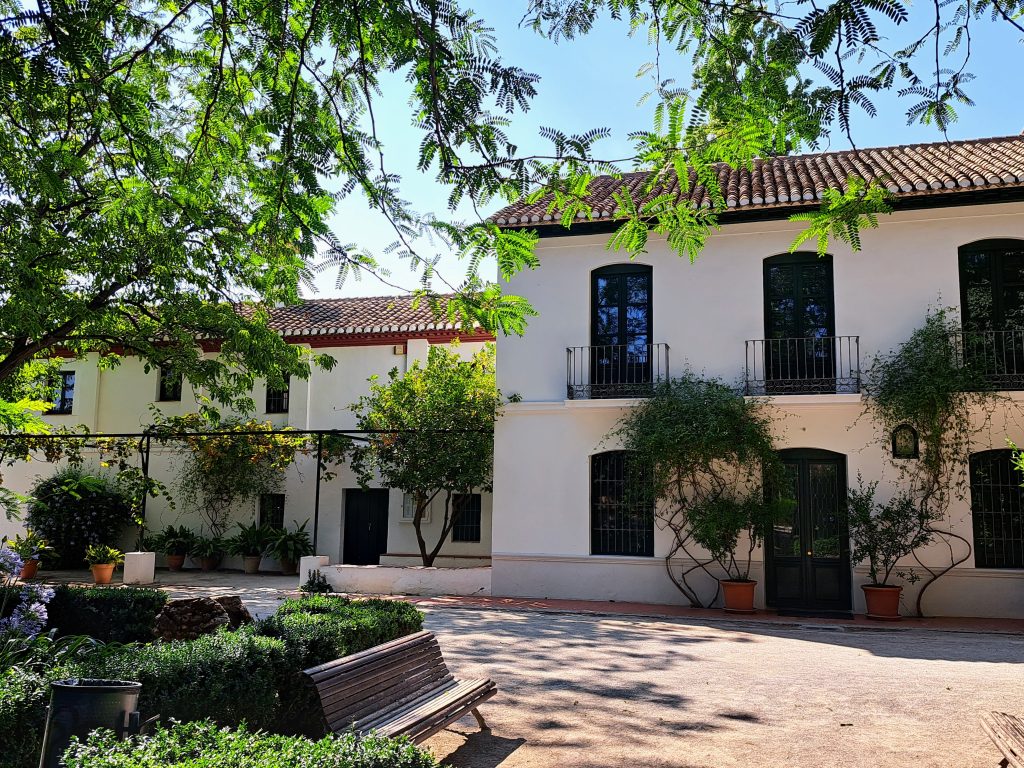

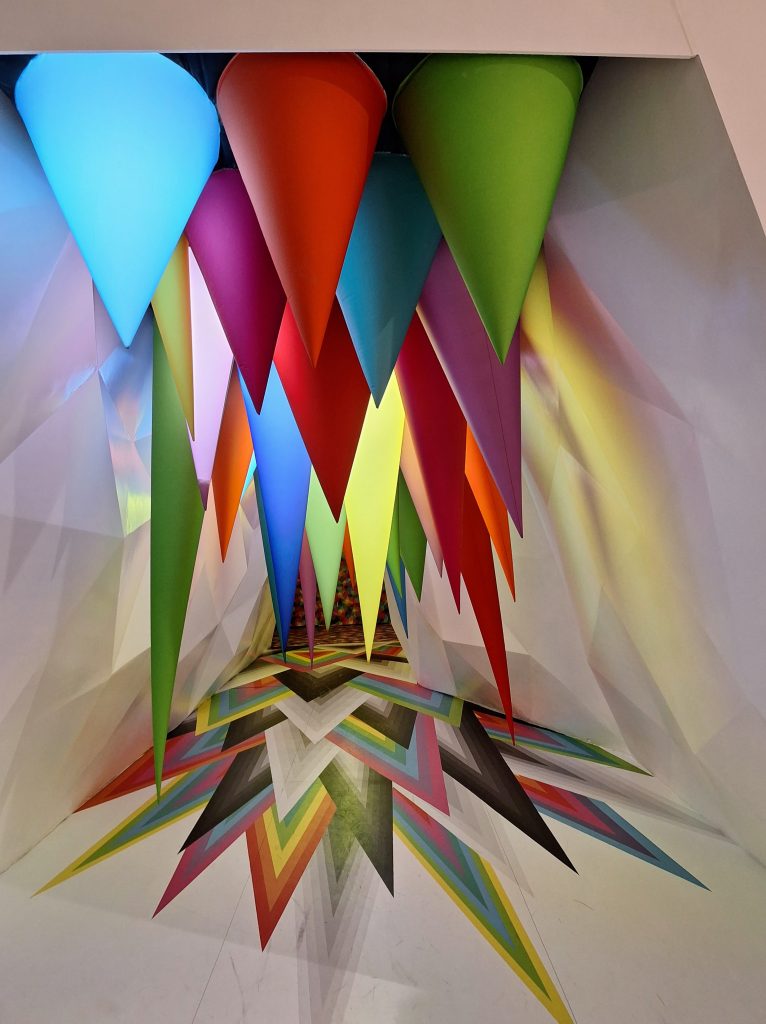



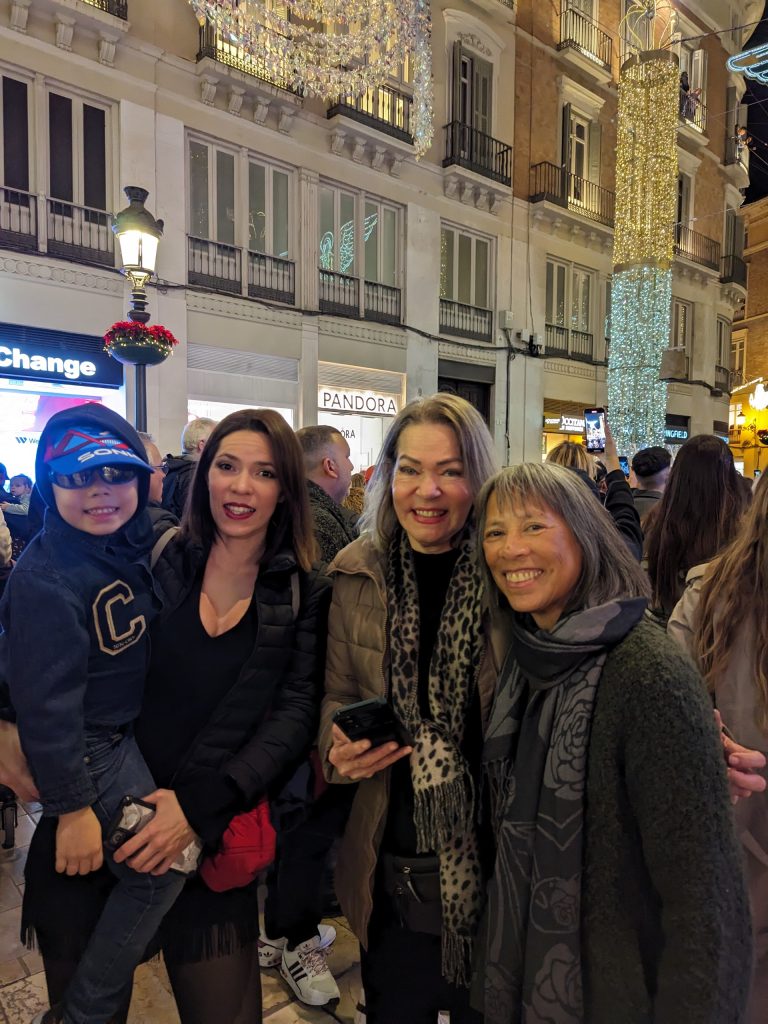
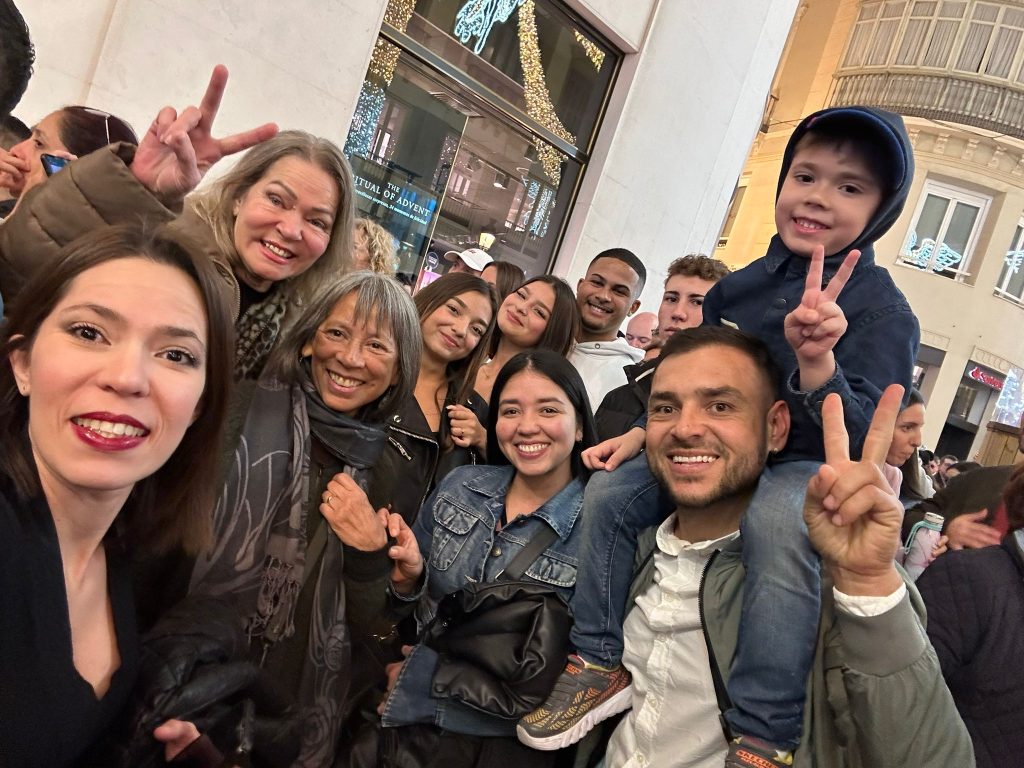
Donna, I love your newsletter and love what you are doing! It’s inspiring.
Thank you, Martha! And thanks for all the wonderful writing you do.
I like Okuda’s work, fascinated by the colorful art pieces. Enjoyed reading your blog, I can visualize every moment of your adventures. October’s blog is a memory to be cherished, thanks.
Yeah, I like the bigness and boldness of his work. Glad you enjoy the blog and thanks for reading! Hope you come back to Spain for another visit.
Beautiful! Art drives us. So glad you are pursuing yours in Malaga. Can’t wait to read your story in Spanish. Hopefully I will have improved my Spanish by then.
That light show was fabulous! Feliz Navidades!
Feliz Navidad, Lynda!